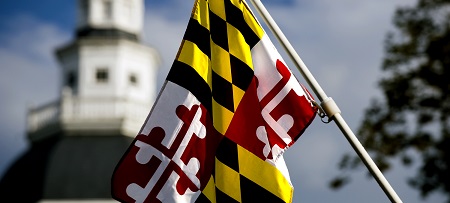It’s official: the Maryland state legislature has passed HB 1087, titled “Electricity – Community Solar Energy Generating System Program,” bringing MD one step closer to community solar.
If you’re not familiar with community solar, check out our write-up on the Maryland community solar legislation and the challenges faced by these programs.
The bill, which enjoyed bipartisan support passed 46-0 in the Senate and 111-29 in the House. However, there are still a few steps that must be taken before Maryland residents will be able to participate in community solar programs through this law.
First, Maryland’s new governor Larry Hogan has to sign the bill into law. Once the bill becomes law, it is up to the MD Public Service Commission (PSC) to adopt regulations in order to implement the bill. This will be a critical point, as other community solar legislation has been slowed down at this stage. (DC for example has not yet implemented their community solar program despite legislation passed in 2013; Maryland’s bill gives the PSC a generous full year to determine relevant rates, etc.)
HB 1087 establishes a pilot period, extending three years after the beginning of the program, which is denoted by the first submission of a petition from a subscriber organization, or six months after the PSC adopts the required regulations. Establishing a strong and fair set of regulations is imperative to the permanent success of community solar in Maryland, as the PSC will convene a stakeholder working group following the termination of the pilot program to study the feasibility of establishing a permanent program. The listed deadline for the recommendation from this study is July 1, 2019.
Of course, and unlike in other jurisdictions where community solar has been adopted, the fundamental legal requirements to carry out this business model are already in place – see our Remote Solar blog for more information; however, this legislation may reduce some of the financial risk and regulatory barriers to entry associated with creating such projects.
Community solar fulfills all three pillars of sustainability: the environment, economy, and social equity. The third pillar, social equity is often overlooked with typical solar projects. Marylanders will not be excluded from access to solar energy because they rent their living space, or live in an area not physically suited for their own solar array. About 32.4% of Americans do not own their homes, so there is certainly a sizable market of Marylanders who have not yet had access to solar.
Additionally, lower-income residents will be more able to access solar, as more low-income residents rent, rather than own their properties. As the solar industry continues to grow, it is important to reduce barriers for those who are actively interested in solar, as they will continue to drive the growth of the industry.
Published with permission from the original publication on Sol Systems Blog By Andrew Dewey.










Comments